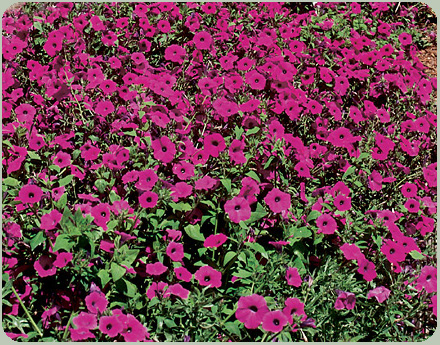
Seed Germination
A seed contains an embryonic plant in a resting condition, and germination is its resumption of growth. Seeds will begin to germinate when the soil temperature is in the appropriate range and when water and oxygen are available. However, most of your wildflower seeds will only germinate between specific soil temperatures. Optimum soil germination temperatures will vary greatly from one species to another. With soil temperatures extremely low or excessively high, growth of the seed is either slow and erratic or germination is entirely prevented. Not all of your seeds will sprout at the same time due to constant temperature fluctuations typically observed in nature.
The most common cause of poor germination associated with wildflowers is the depth at which the seeds are sown. Small seeds should be planted on the soil

|
Within the descriptive literature of each species, we have listed the following germination data to assist you in your planting.
GERMINATION DAYS: The average time period in which a particular variety will germinate given optimum conditions. Please allow a variance of plus or minus 25%.
OPTIMUM SOIL TEMPERATURE FOR GERMINATION: The optimum temperature in degrees Fahrenheit for rapid germination. A steady temperature between the published limits, based on laboratory data, is recommended for best results.
SOWING DEPTH: An increment in inches has been included for each variety as a quick reference for optimum sowing depth. A good rule to follow, if in doubt about any variety, is to sow the seed at a shallow depth.
SURFACE SOW: Due to the extremely small size of the seed, the area should be prepared and the seed sown directly on the surface of the soil, then pressed or rolled in. DO NOT COVER.
Index | Photos | Growing Info | Seed Sources | Web Links | Mixes | Zone Map